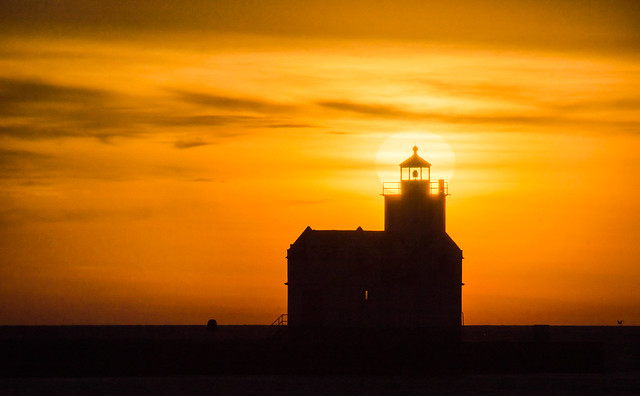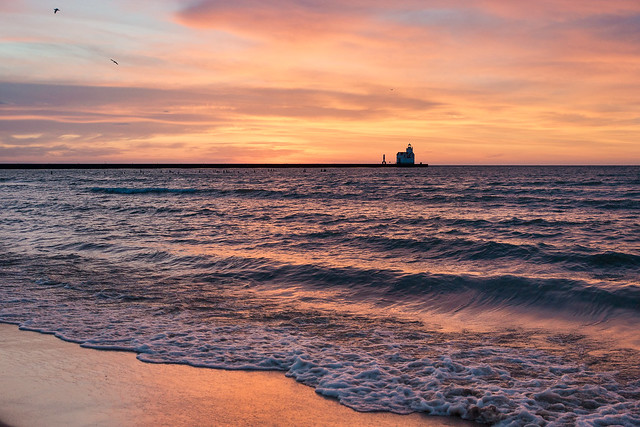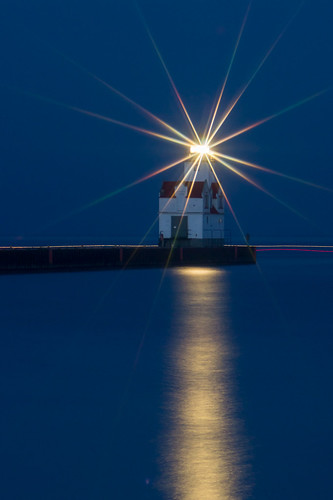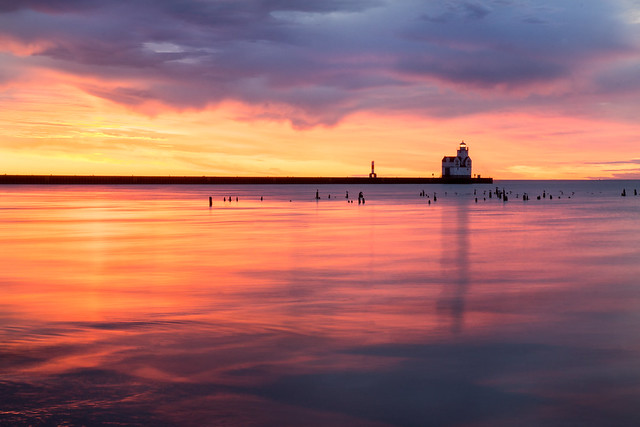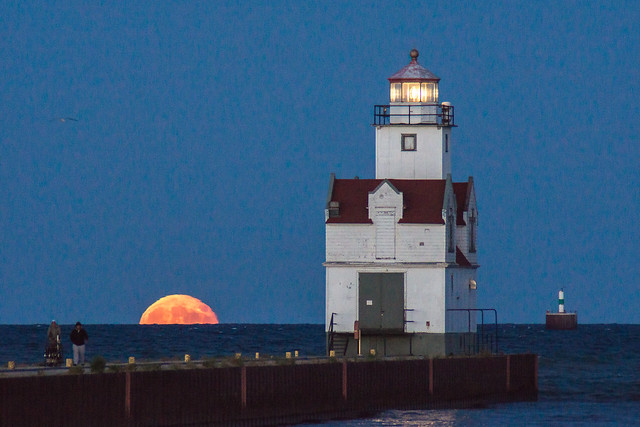Lake Michigan
Hope On the Horizon
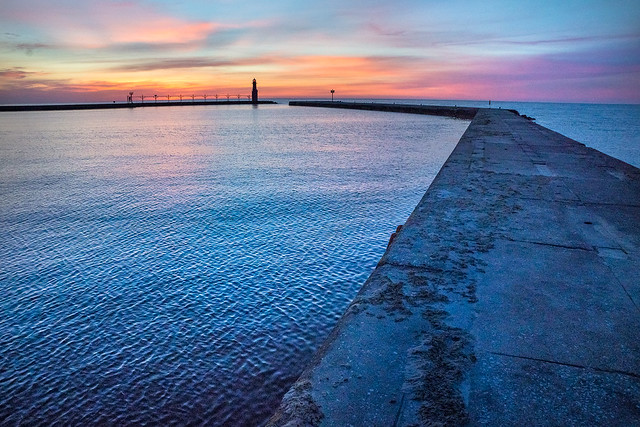
The best colors of the morning sky happen a little before sunrise. This is the view, from the south pier, of the Algoma, Wisconsin harbor and lighthouse. In a few minutes, the sun will rise over Lake Michigan.
If you look at the larger version of this image, you’ll be able to see the glow of the familiar red light from the lighthouse. To view a larger version, click on the photo.
Morning Rest
Shoreline Stroll
Colors of Calm
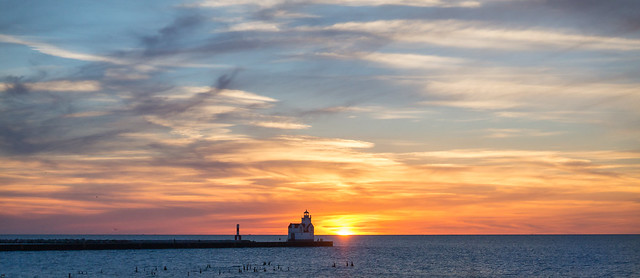
The sky was interesting enough to warrant a wide, panoramic view. This, of course, is the Kewaunee, WI lighthouse with a beautiful background provided by the wispy clouds and the sun rising over Lake Michigan.
These are the kind of mornings I wait for, when I’m looking for a sunrise to photograph. Haven’t had the opportunity to catch one like this in awhile. This one was taken the morning of September 6, 2013.
You really should look at the larger version that spreads across the whole screen. Click the photo to see it.
Star Bright
I went out to photograph a full moon…but ended up focusing on a star.
This is a long exposure, early evening view of the Kewaunee, Wisconsin Lighthouse. This is not the shot I was going for, but that’s the way it works sometimes.
I’d been watching the lunar calendar and decided the best evening to capture the full moon rising over Lake Michigan would be Friday. When it was time to head for the beach, I noticed a band of clouds in the sky but thought they might be high enough to not block the horizon. Turns out, there was enough “atmosphere” between me and the moon, I didn’t see it until much later in the night.
Since I was at the beach and had everything set up, I thought I’d fiddle around getting a night shot of the lighthouse. While fiddling, I thought the star filter I have might add a nice effect to the bright lighthouse light. The star filter is threaded so you can screw it on to the end of the lens. It creates an X pattern over any bright light source in the photo’s frame. I’ve often wanted more lines then the four it’s designed to create, but it is what it is. …or is it?
I took the star filter off the lens and decided to try and just hold it very still, by hand, in front of the lens. That worked better than expected. Next I took a shot and held the filter still it for a few seconds and rotated it a few degrees and, again, held it still. That gave me more points to the star…and it looked pretty good. I experimented a bit more to end up with this version.
This is a 20-second exposure. (20-sec, f/11, ISO 200) I was holding the filter in front of the lens – as close as I could without actually touching the lens. When I tripped the shutter (with a remote), I would count to five, rotate the filter, count to five, rotate the filter, count to five and quickly remove the filter for the remainder of the exposure. As you can see, that gave me three separate sets of star points.
Let me point out a few other interesting effects from the long exposure time. The lake wasn’t as smooth as it seems in this image. The long exposure has a tends to smooth out any motion. You might also notice a small, dark, oblong spot near the corner of the pier, just to the right of the lighthouse. That is actually a man who was fishing off the pier. He moved enough over the 20-seconds that all you see is a blur. And finally, there are a couple of thin lines of light that run horizontal through the frame…about level with the deck of the pier. Those are lights from a boat that was leaving the harbor, traveling left to right over the span of the 20-second exposure.
To view a larger version of this image, click on the image.
Gold Fusion
Shades of Dawn
Lakeside Sedation
Dawn’s Early Flight
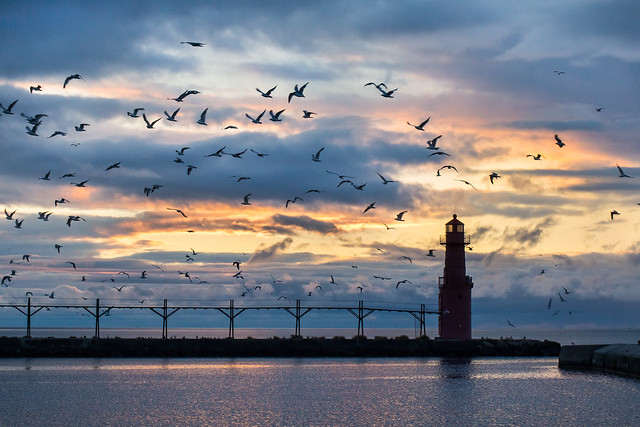
On the morning I took this photo, it was a calm and slowly brightening scene. I was focused on capturing the color in the clouds behind the lighthouse.
A large number of seagulls were resting on the pier running perpendicular to the lighthouse, apparently having spent the night there.
For no particular reason, they began to take off and I simply clicked the shutter several times as they inserted themselves into the scene.
To view a larger version of this image, click on the photo.



















































